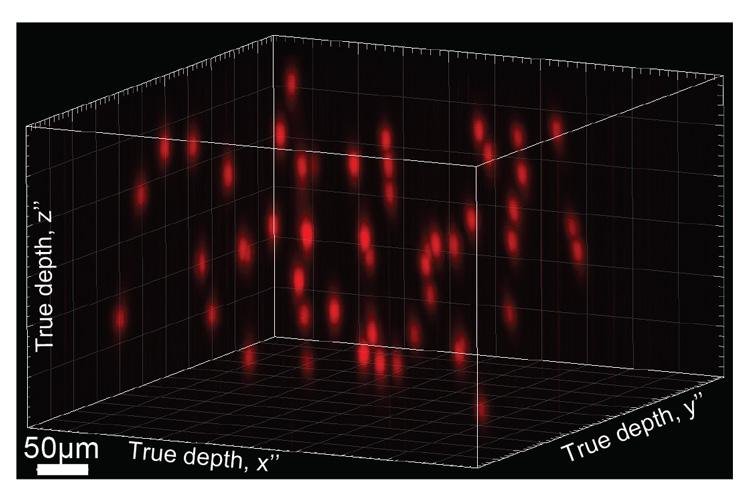Scientists used holographic technology to stimulate neuronal activity in a 3D chunk of the brain. Photo by UC-Berkeley
May 1 (UPI) -- Scientists at the University of California, Berkeley are building a brain modulator powered by a novel new technology called holographic projection.
Their aim is to develop a modulator capable of suppressing and activating thousands of neurons in real time, replicating the patterns of actual brain activity. In doing so, the device could trick the brain into various sensations and experiences.
The technology could offer a work around solution to peripheral nerve damage, for example, or be paired with a prosthetic limb to replicate a person's sense of touch.
"This has great potential for neural prostheses, since it has the precision needed for the brain to interpret the pattern of activation," postdoctoral researcher Alan Mardinly said in a news release. "If you can read and write the language of the brain, you can speak to it in its own language and it can interpret the message much better."
Scientists described the modulator prototype in a new paper published this week in the journal Nature Neuroscience. The device uses precise flashes of light to activate as many as 50 neurons at once in a 3D section of the brain. Each of the 2,000 to 3,000 neurons in the brain model is outfitted with a protein that, when hit with light, turns the cell on or off.
To precisely target each neuron, researchers used holography, a method for bending and focusing a light field into a 3D image. The modulator's liquid crystal screen helps convert the laser light into tiny 3D patterns that can be projected into a single neuron.
"The major advance is the ability to control neurons precisely in space and time," said postdoc Nicolas Pégard. "In other words, to shoot the very specific sets of neurons you want to activate and do it at the characteristic scale and the speed at which they normally work."
Both Mardinly and Pégard work in the lab of Hillel Adesnik, an assistant professor of molecular and cell biology at Berkeley.
Researchers tested the technology on mice models, using the modulator to stimulate the touch, vision and motor areas of the brains.
Scientists hope to scale up the technology's capabilities and scale down the actual size of the modulator so that a person could carry one around in backpack. They also plan to begin studying actual brain patterns so to replicate the specific neuronal signatures of different sensations.















